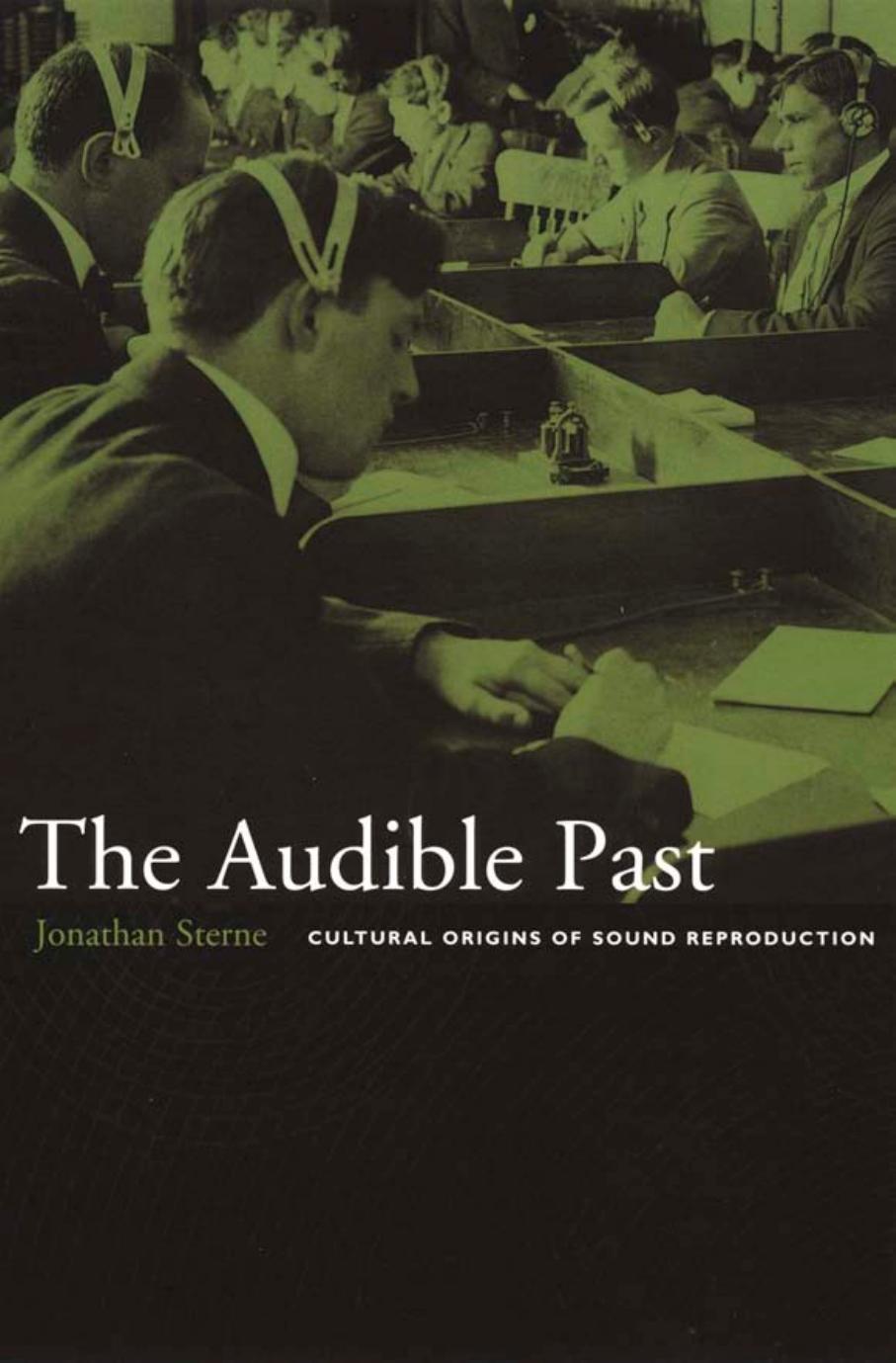The Audible Past: Cultural Origins of Sound Reproduction by Jonathan Sterne

Author:Jonathan Sterne
Language: eng
Format: epub, pdf
Tags: ebook
Publisher: Duke University Press
Published: 2011-08-19T16:00:00+00:00
Although I will argue that the logic of “original” and “copy” does not adequately describe the process of sound reproduction, one cannot deny that questions of the relation between originals and copies have formed a central preoccupation of twentieth-century theories of communication and culture.3 Conventional accounts of sound fidelity often invite us to think of reproduced sound as a mediation of “live” sounds, such as face-to-face speech or musical performance, either extending or debasing them in the process.4 Within a philosophy of mediation, sound fidelity offers a kind of gold standard: it is the measure of sound-reproduction technologies’ product against a fictitious external reality. From this perspective, the technology enabling the reproduction of sound thus mediates because it conditions the possibility of reproduction, but, ideally, it is supposed to be a “vanishing” mediator—rendering the relation as transparent, as if it were not there.5 Inasmuch as its mediation can be detected, there is a loss of fidelity or a loss of being between original and copy.6 In this philosophy of mediation, copies are debasements of the originals.
Everywhere we turn in the search for true fidelity, the desire to capture the world and reproduce it “as it really is” yields a theory of correspondence between representation and that which is represented. While the locution perfect fidelity suggests that there is no loss of being between an original sound and its copy—as do the Victor records ads discussed at the beginning of this chapter—today this sensibility has few philosophical adherents.7 The problem is commonly conceived in this fashion: reproduction, the technological transformation of an original into a copy, introduces a potential or real loss of being in the original sound. Eric Rothenbuhler and John Peters offer a meditation on recording as mediation in a fascinating essay entitled “Defining Phonography.” In comparing analog and digital recording technologies, they write that “the phonograph record and magnetic tape do contain traces of the music”: “There is an unbroken chain from the sound in the living room to the original sound as recorded.” In other words, analog recording technologies have an authentic relation with the “original” behind the recording because—in their estimation—sound bears a causal relation to the analog recording. Digital recording, meanwhile, converts sound into a series of zeros and ones to be reconstructed as sound at the moment of reproduction. For Rothenbuhler and Peters, digital recording is, therefore, more ontologically distant from live performance than analog recording. While their thesis that phonography is ontologically different than digital sound recording is certainly a fascinating proposition, their definition of phonography assumes that recording captures sounds as they exist out in the world. In essence, they argue that mediation is an ontological problem brought about by the technology of sound reproduction itself.8 In contrast, this chapter argues that mediation is a cultural problem and only one possible way of describing sound reproduction.
Rothenbuhler and Peters anticipate and answer an Altmanesque objection that asserts the material heterogeneity of recorded sound, but my point here is slightly different. Rather than asserting
Download
The Audible Past: Cultural Origins of Sound Reproduction by Jonathan Sterne.pdf
This site does not store any files on its server. We only index and link to content provided by other sites. Please contact the content providers to delete copyright contents if any and email us, we'll remove relevant links or contents immediately.
| Circuits | Digital Design |
| Electric Machinery & Motors | Electronics |
| Fiber Optics | Networks |
| Superconductivity |
Whiskies Galore by Ian Buxton(40304)
Introduction to Aircraft Design (Cambridge Aerospace Series) by John P. Fielding(32332)
Small Unmanned Fixed-wing Aircraft Design by Andrew J. Keane Andras Sobester James P. Scanlan & András Sóbester & James P. Scanlan(32137)
Craft Beer for the Homebrewer by Michael Agnew(17440)
Turbulence by E. J. Noyes(7033)
The Complete Stick Figure Physics Tutorials by Allen Sarah(6632)
Kaplan MCAT General Chemistry Review by Kaplan(6045)
The Thirst by Nesbo Jo(5779)
Bad Blood by John Carreyrou(5763)
Learning SQL by Alan Beaulieu(5400)
Weapons of Math Destruction by Cathy O'Neil(5032)
Man-made Catastrophes and Risk Information Concealment by Dmitry Chernov & Didier Sornette(4731)
iGen by Jean M. Twenge(4695)
Digital Minimalism by Cal Newport;(4512)
Life 3.0: Being Human in the Age of Artificial Intelligence by Tegmark Max(4497)
Audition by Ryu Murakami(4093)
1,001 ASVAB Practice Questions For Dummies by Powers Rod(4034)
Electronic Devices & Circuits by Jacob Millman & Christos C. Halkias(4021)
Pale Blue Dot by Carl Sagan(3997)
